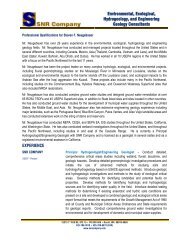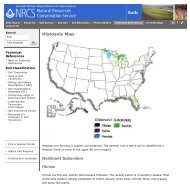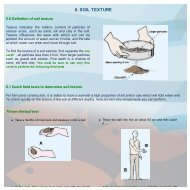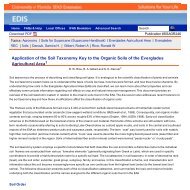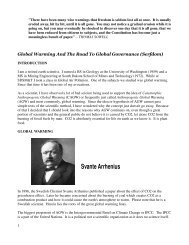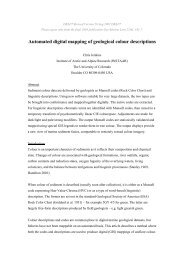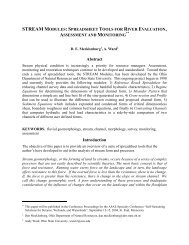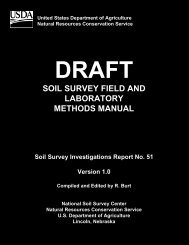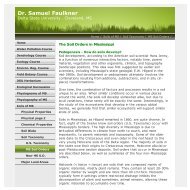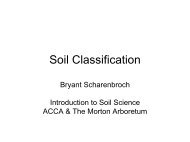chapter 3 fundamentals of fluvial geomorphology and stream ...
chapter 3 fundamentals of fluvial geomorphology and stream ...
chapter 3 fundamentals of fluvial geomorphology and stream ...
Create successful ePaper yourself
Turn your PDF publications into a flip-book with our unique Google optimized e-Paper software.
parameter used in the description <strong>and</strong> comparison <strong>of</strong> me<strong>and</strong>erbehavior, <strong>and</strong> in particular, bank erosion rates. The radius <strong>of</strong>curvature is dependent on the same factors as the me<strong>and</strong>erwavelength <strong>and</strong> width. Me<strong>and</strong>er bends generally develop a r c /w <strong>of</strong>1.5 to 4.5, with the majority <strong>of</strong> bends falling in the range <strong>of</strong> 2 to 3.Nanson <strong>and</strong> Hickin (1986) examined the influence <strong>of</strong> r c /w on bendmigration rate <strong>and</strong> reported that maximum bank erosion ratesoccurred when the <strong>stream</strong> acquired an r c /w <strong>of</strong> between 2 <strong>and</strong> 3.This finding has been supported by many empirical studies, forexample, Thorne (1991). Plots <strong>of</strong> erosion rate versus r c /w do,however, display wide scatter <strong>and</strong> Biedenharn et al. (1989)showed that part <strong>of</strong> this scatter could be explained by variations inthe erodibility <strong>of</strong> the outer bank material (Figure 3.9).Figure 3.9 – Average AnnualErosion Rate versus r/w forMe<strong>and</strong>er Bends <strong>of</strong> the RedRiver – Open SymbolsRepresent Free, Alluvial Bends<strong>and</strong> Closed Symbols,Constrained Bends (developedfrom diagrams by Biedenharn etal. 1989)River slope is one <strong>of</strong> the best indicators <strong>of</strong> the ability <strong>of</strong> theriver to do morphological work <strong>and</strong>, in general, rivers with steepslopes are much more active with respect to <strong>stream</strong> changesachieved through sediment movement, bed scour, bar building,<strong>and</strong> bank erosion. Slope can be defined in a number <strong>of</strong> ways,however, leading to inconsistency in the way slope is used torepresent the ability <strong>of</strong> the river to do morphological work. Ideally,the energy slope should be used when calculating <strong>stream</strong> power,but the data required are seldom available. In gaged <strong>stream</strong>s, thewater surface slope may be calculated using stage readings atconsecutive gaging stations along the <strong>stream</strong>. However, manysmall <strong>stream</strong>s are ungaged. In ungaged <strong>stream</strong>s, the thalwegslope is <strong>of</strong>ten used to calculate <strong>stream</strong> power. The thalweg pr<strong>of</strong>ilenot only provides a reasonable basis for calculation <strong>of</strong> <strong>stream</strong>power, but may aid in locating bed controls due to geologicFundamentals <strong>of</strong> Fluvial Geomorphology <strong>and</strong> Stream Processes 31



